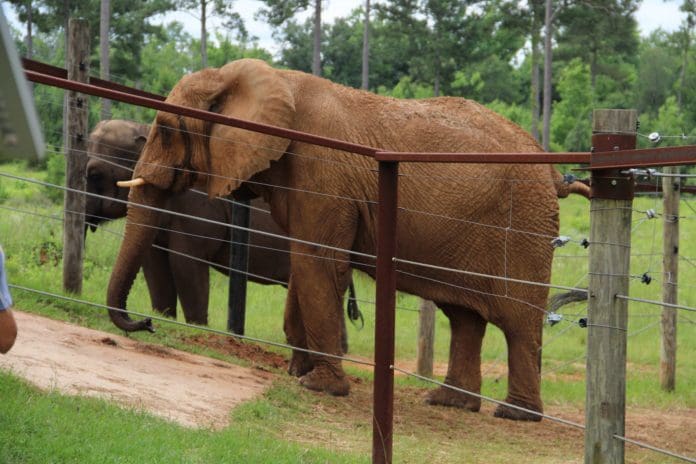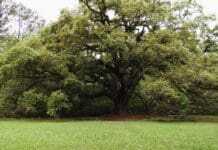Mundi’s Attapulgus Adventure
It’s hard to imagine the world’s largest land animal acting like a little puppy, but that’s exactly how Mundi the elephant behaved when she began to settle into her new home in Attapulgus, Georgia. Flopping her ears and swishing her tail, the 8-foot tall, 8,000-pound elephant showed nothing but curiosity and excitement as I got to witness her in her new habitat at Elephant Refuge North America.
The 41-year-old African elephant has spent the majority of her life in what I call the “animal entertainment” industry. For the past 35 years, Mundi has been on display at the Mayaguez Zoo, also known as the Dr. Juan A. Rivero Zoo, in Puerto Rico. The zoo was shut down to the public following damage from Hurricane Maria in 2017. The animals remained for years, but in February 2023 concern over their health and care led the U.S. Department of Justice to order the permanent closing of the zoo and the relocation of all animals that remained. By that time, Mundi was blind in one eye and missing a tusk.
“You can bring a wild animal into captivity but you can’t change who they are.”
Carol Buckley, CEO & President Elephant Aid International
Mundi’s Life in Puerto Rico
For her three-plus decades at the zoo, Mundi had been the only elephant in the facility and spent all those years alone. Mundi also spent that entire time in an enclosure that was 15,000 square feet. Equal to about one-third of an acre, 15,000 square feet may sound like a lot of space, but for a large animal like an elephant, things can get cramped quickly. When I looked at an aerial photo of Mundi’s enclosure in Puerto Rico, I found it hard to believe that a creature of her size could be comfortable living there long term. Then there was the fact that Mundi had lived there all by herself. According to elephant expert and caregiver Carol Buckley, zoos have traditionally housed elephants alone. “No one realized the damage that was doing to them, and now we’re seeing progress in the Association of Zoos requiring that you have more than 1 elephant together,” said Buckley. “There are some zoos now that actually have bachelor herds of males which is fantastic. They’re just starting to see that they need more space, they need to be with others of their own kind, and you need to give them autonomy, just like us.”


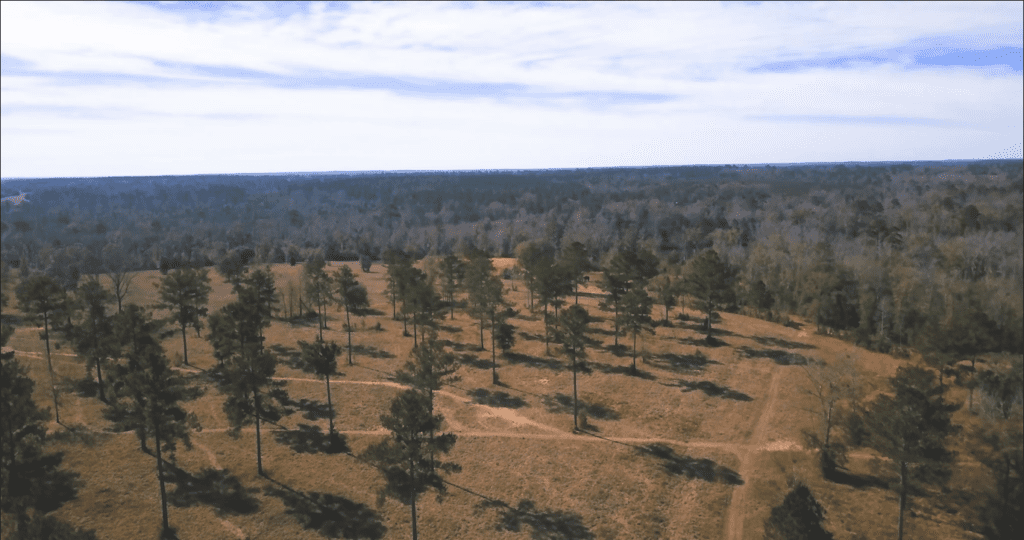

Mundi’s old home in Puerto Rico compared to her new terrain at the refuge. Photo curtesy of Elephant Refuge north America Facebook (left) and Jon Manson-Hing (right).
Carol Buckley, the CEO and President of Elephant Aid International and founder of Elephant Refuge North America, has been with Mundi every step of the way in the process of relocating her to the refuge in south Georgia. Buckley described the elephant to be calm and curious upon arrival, saying she seemed to adapt well to her new environment as well as the other animals at the refuge. “Elephants are highly social, so they derive a lot of security and comfort from other elephants. And Mundi’s doing great, even better than we expected for being alone for 35 years,” said Buckley. “But that demonstrates that you never lose the wild of this animal. You can bring a wild animal into captivity but you can’t change who they are. You just inhibit their natural behavior by the facilities and the management you put on them.”
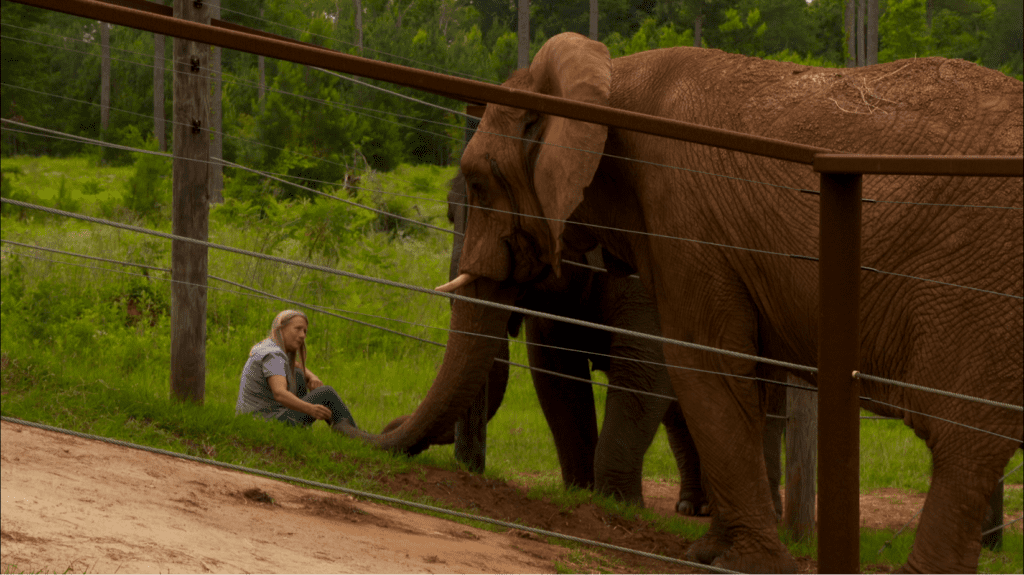

A custom-built transport crate was built for Mundi and delivered to the zoo a month prior to the travel date so she could become accustomed to it before the journey. Then, on May 12, 2023, Mundi did something most elephants will never get the opportunity to do: fly. The flight to Jacksonville, Florida, funded by The Wild Animal Sanctuary, took about 3 hours. Mundi then traveled the rest of the way to the Elephant Refuge North America in her transport crate on the back of a truck.
Elephant Refuge North America
The Refuge is 850 acres of natural terrain that includes forests, fields, and lakes that the retired elephants are free to live in and explore. The warm climate of the area allows the animals to stay outside most of the year. There is also a barn where the elephants can stay if they choose. According to Buckley, when it came to the size of the refuge she could have made it larger. However, Buckley says she chose to focus on what was manageable and best for these large creatures. “I choose to stay small, yet make it be 100% effective for the elephants.”
Unlike the zoo where Mundi grew up, the refuge is not open to the human public. Buckley says this type of isolation helps provide the elephants with a more realistic taste of the wild. She says Mundi can spend all her time enjoying and exploring the location while getting to know her new companions, Bo and Tarra.
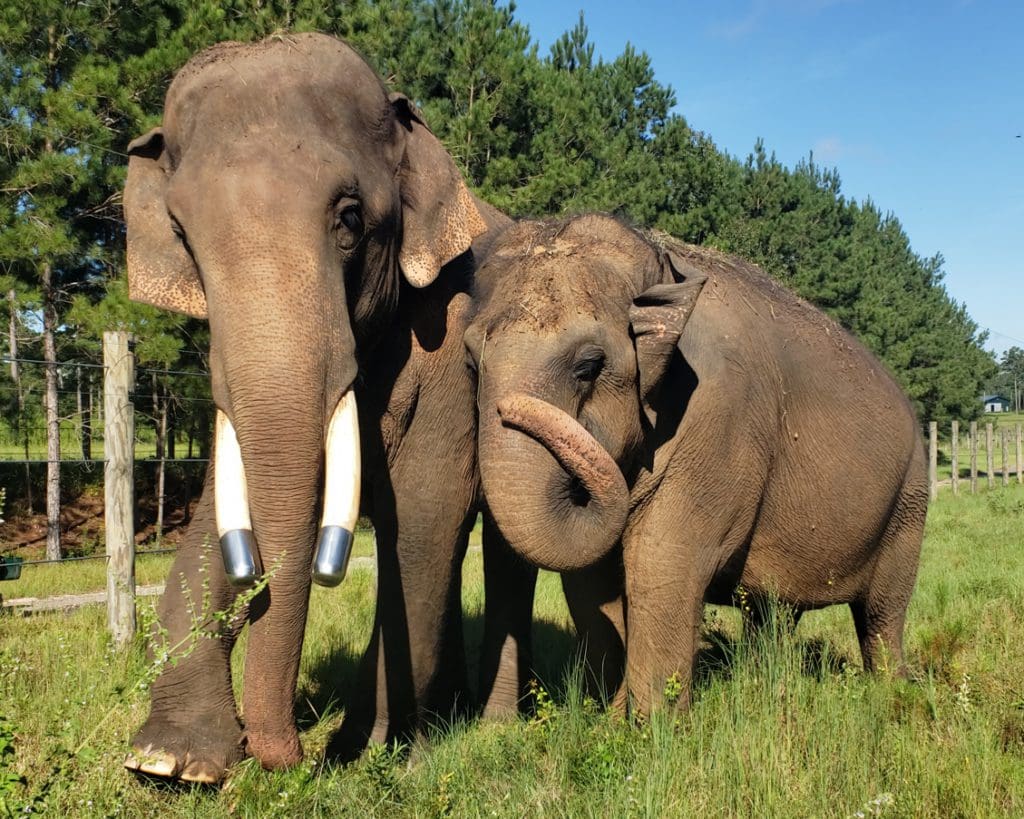

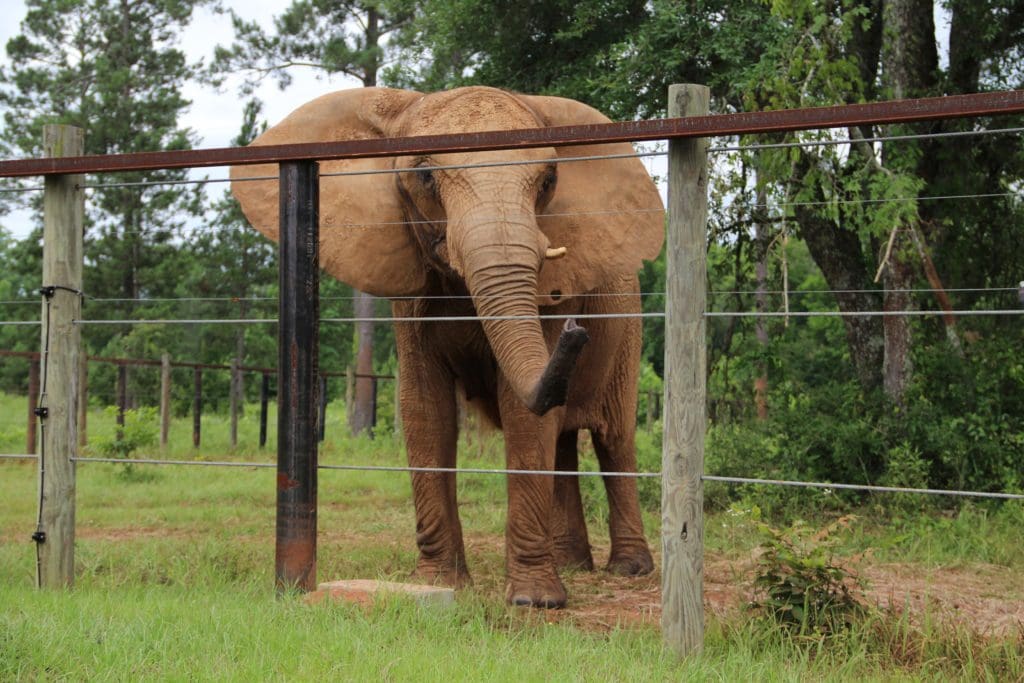

Hello Roomie!
Bo and Tarra were the first residents of the refuge, and they both seemed eager to welcome their new roommate to the area. I was able to see the three elephants interact with each other during their first week together. At the time, there was still a fence between them during this “get-to-know-you” stage. Still, the elephants showed genuine interest and delight in each other. “They’re always wild,” says Buckley. “[Mundi is] always going to have that elephant sense and she always has that drive. She may not know how to really correctly act around other elephants, but she can learn, and Bo will teach her,” continues Buckley with a smile.
For me, observing the elephant interactions was like watching a long-awaited family reunion; with gentle gestures, squeals, and trunk touches, it was clear that the animals enjoyed the presence of one another, and provided a strong welcome for Mundi.
Both retired animal entertainers themselves, Bo and Tarra came to the refuge in 2021. Bo was the first resident of the refuge in September, and Tarra followed two months later. The tale of Bo and Tarra has been the subject of a Local Routes story before. WFSU’s Mike Plummer followed the construction of the refuge and met both elephants a few months after Tarra’s arrival.
Bo and Tarra are Asian elephants, whereas Mundi is an African Savanna elephant. Seeing these creatures together, the differences are quite noticeable. Mundi is a little smaller. Her skin is also more of a tan color, as opposed to Bo and Tarra’s gray. Another key difference is their ears. According to Elephant Aid International, African elephant’s ears are pointed and triangular-shaped, resembling the continent of Africa.
There is one other non-elephant type creature that lives at the refuge, Sammie the dog. After a short time together, Mundi and Sammie can often been seen chasing each other around the secure enclosure. Once again, Mundi seeming to act more like a puppy at play than a middle-aged half-blind elephant.
Although the refuge is not open to the public for you to see these elephants (and dog) in person, it is possible to witness these moments between these animals online. The refuge has installed cameras that stream live video of the elephants as they explore and live in their new environment. Buckley says this allows the public to get live updates and footage of the elephants without the risk of disrupting the elephant’s space or peace. To watch these elephants mingle for yourself, check out their Elecam.
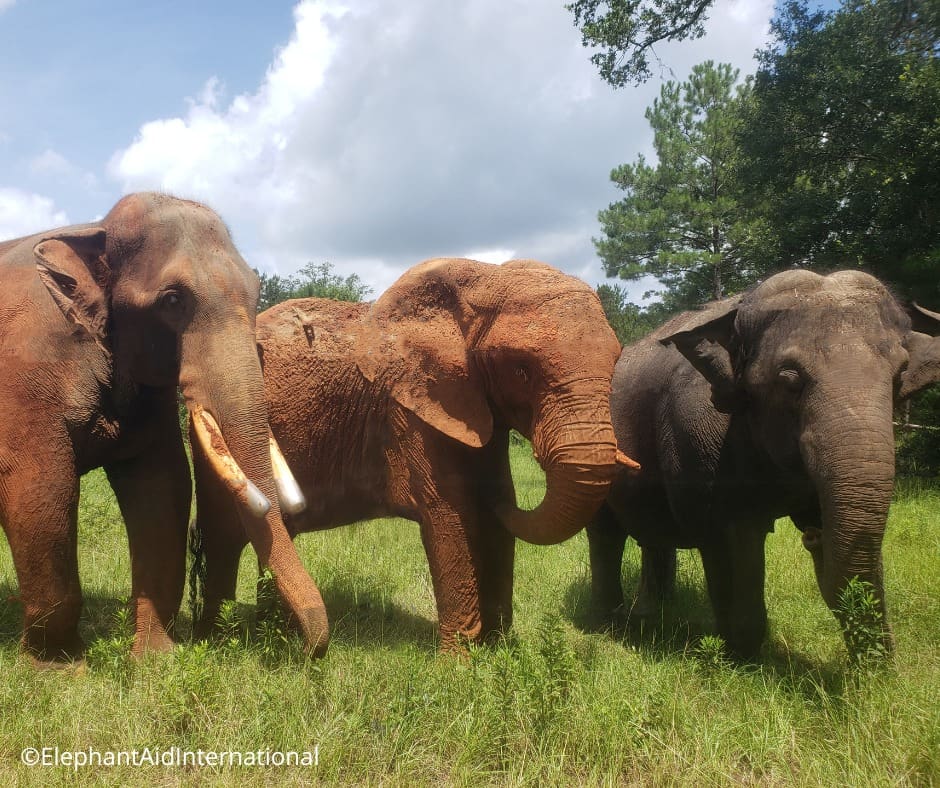

Check out this video with the first video we had of Mundi in her new environment.
Tabitha Weinstein is an Associate Producer for Television at WFSU Public Media. She was raised in Tallahassee, Florida, and has a passion for sharing the stories and news of the community to the public through her content contributions. She is currently a junior at Florida State University, getting her bachelor's degree in Editing, Writing, and Media with a minor in Humanities.
In her free time, Tabitha can be found hiking in the woods of North Florida, participating in the art scene of Tallahassee, and spending quality time with her friends and family.

